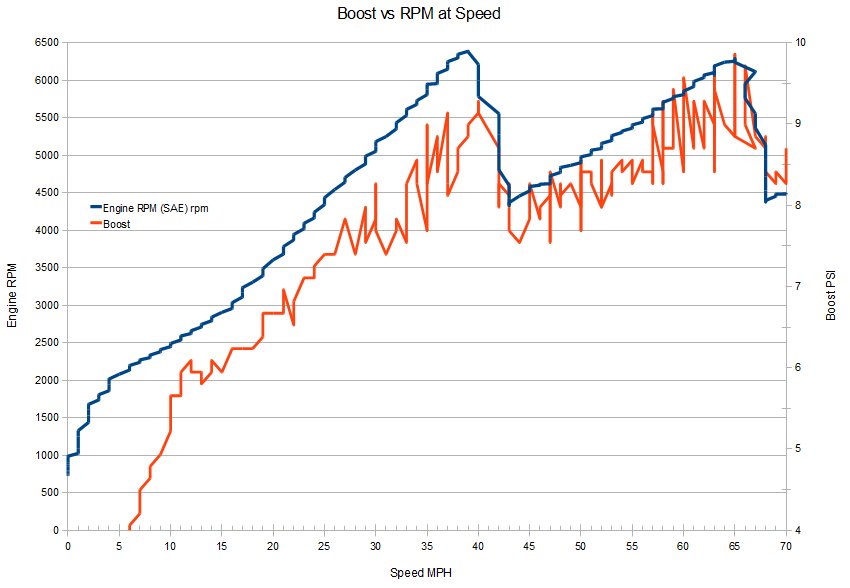This is an analysis of a on-road hptuners scan. It is easy enough to export from hptuners to a csv file. This lends itself to graphing in excel or similar tools. However, the key info we want to graph, HP and Torque, are sometimes factored upward in tuning. By analysis, if we can discern what the factor is relative to a stock tune, we can de-factor these values prior to graphing.

This chart shows such an approach. Export from hptuners. Add a column next to Torque, and then modify that column to de-factor the values, and also to correct for SAE conditions.
For defactoring, consider the stock values and the tune values for airmass coefficient(s), and resolve a factor by RPM. IN this case there was a fairly consistent factor across the range, so I choose a value slightly higher than the max factor in the range to cover the entire range. I am considering modifying the tune to make the factor consistent, but it is precisely correct as is.
For the dyno conditions correction I used an online calculator, with baro and temp from the tune; I need to sort out the formulas so I can simply do the math in the excel.
Also I added a correction for wheel versus crank; the ATS-V stock averages 425 whp for a 464 crank hp rating, which is 91% or 9% transmission losses. This could be used, although I instead chose to use 400 whp / 464 hp or .86 or 14% tranny losses which is more conservative (produces lower numbers) because we are going in this case from crank to WHP.
Add another new column for WHP, calculating it from the torque and rpm. Then chart as an XY/Scatter diagram, for defactored and corrected wheel torque, WHP vs rpm.
The blue line is WHP, the read line is WTorque. I added the boost pressure in gray, choosing boost/vacuum in this case.
The large event 5000-5300 rpm does not repeat in every WOT run; I wonder if it is a physical event on the course, such as a large bump or dip. This needs more study. Update: This appears to be a traction management advance event pulling timing. More study needed to lock it out.
There are three gold lines. The solid line shows the VVT intake cam angle. The dashed gold shows the intake cam angle commanded. The dotted gold line shows what I suspect is an optimal tune. I arrived at these values based on the stock tune’s estimates of hp generated at various airmass, RPM, and intake cam angles. This needs more study.



